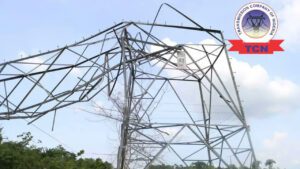
Localised architecture, international synergy, panacea to insecurity
No doubt, insecurity has worsened in Nigeria to become an albatross. The profiles of insecurity threats and disturbances ravaging the Country recently, has become deep seated with the emergence of variant offshoots compounding to leave a sensation of anarchy. The apparent helplessness of the Government to address the myriad of security challenges in the Country, has brought the question of why the Government ought to seek for international help. Yielding to this call however, is seemingly a pregnant subject, as it is known that no concrete evidence shows that the Nigerian government is taking such move.
While Boko Haram has been a thorn in the flesh of the Country with emphasis on the North East, the expansion of the claws of banditry recently, has engulfed the North West with the scourge of kidnap-for-ransom. Whether the Nigerian State is winning the battle against the forces of terrorism in the County is another pregnant subject, as onslaughts against Security forces by terrorists have continued ceaselessly.
A report titled: “Violent Extremism in Sub-Saharan Africa: Lessons from the Rise of Boko Haram,” published by the UK-based Tony Blair Institute for Global Change, had disclosed that no less than 1,868 security operatives were killed in the North-East, Nigeria, by Boko Haram between 2018 and 2020. The report, dated July 23, 2021, which is part of the institute’s Africa Frontiers Series, described the three years in question as the deadliest for security agents on the frontline of the struggle with terrorists in the Country. According to the report, the figure for the three years is almost equal to the total number of operatives killed by the terrorist group in six years, (2011-2017.). The report also disclosed that in the North-West, Ansaru is winning the hearts and minds of locals by using the al-Qaeda model. The report authored by Audu Bulama Bukarti, contained detailed investigation relating to such issues as the origin of Boko Haram, its founders, funding, internal battles, strengths, sustaining factors and capacity to carry out attacks.
The report had mentioned that “factional splits led to more, not less, violence with Boko Haram’s ideology retained despite the divisions. Boko Haram’s splintering into the Ansaru faction in 2012 and then ISWAP in 2016 (the original faction JAS also remains present) did not diminish the terror threat – but enhanced it. All three splinter factions share operational and ideological histories, with networks built over many years. This divergence has only served to create additional modus operandi and growth strategies beyond the initial plans outlined by Muhammed Yusuf. Between 2018 and 2020, for instance, 1,868 security personnel were killed – a number almost equal to the total casualties between 2011 and 2017. ISWAP, led by Muhammed Yusuf’s son Abu Musab al-Barnawi between 2016 and 2019, symbolically continues the Boko Haram legacy and is responsible for much of the violence in the Lake Chad Basin, while Abubakar Shekau’s rogue JAS faction has pivoted to a criminal-like operation that targets civilians and engages in systematic looting of property – despite its leader’s recent death.
“In the North West, meanwhile, Ansaru is engaged in a long and dangerous game of winning the hearts and minds of locals by mimicking al-Qaeda’s so-called civilian-friendly model. Yet each essentially remains driven by the same ideology of their founding fathers. Do not mistake factional disputes and changes in leadership as ‘operational crises’ for terrorist groups. Global jihadi factions are now more prone to splintering and operational divergence than they were 20 years ago. Yet policymakers need only look to Boko Haram to see how it has grown stronger following its factional splits – an approach that can apply equally to jihadi actors emerging in the Sahel and parts of Syria. Efforts to tackle Boko Haram factions should be tailored to the individual entities that are operating but all bodies, including the UN and military forces involved in the fight against ISWAP, need to recognise that the group’s founding ideology, relationships and local influences still matter today. Whatever incarnations the separate factions might take in the future, they will always carry their Boko Haram doctrines and heritage with them. Policymakers can therefore future proof their strategies by acknowledging that splinter factions will remain Boko Haram at their core.”
The report had stated further that: “The threat from Boko Haram became more acute following its splintering into three distinct factions between 2012 and 2016, and the past three years have proved the deadliest ever for security forces battling the group. While international actors have long been driven by the view that Boko Haram and its constituent factions would be weakened by the defeat of the Islamic State (ISIS), this has not come to pass and efforts to defeat the group have fallen short. In fact, the ISIS-allied faction of Boko Haram became stronger after the territorial defeat of the Islamic State in Iraq and Syria in 2019. Boko Haram started as a local Islamic movement when a group of radical preachers infiltrated religious, social and political circles in northeastern Nigeria. Nearly 20 years later, the power that Boko Haram wields at the local level continues to sustain it. Boko Haram was the first major terrorist group to emerge in Africa. Two decades on, it is one of the most dangerous in the world. Understanding the story of how its members got there and how they sustain their presence to this day is crucial if we are to defeat Boko Haram and jihadi groups elsewhere.
“Boko Haram benefited from alliances with al-Qaeda and ISIS, but transnational support was – and is – not essential to its survival. Boko Haram’s alliances – first with al-Qaeda, and then with ISIS – produced material, logistical and financial support as well as capacity-building benefits that elevated the group’s operations and standing. Consequently, the success of Boko Haram factions especially the Islamic State West Africa Province (ISWAP) has in turn benefited ISIS and its bid for global territorial dominance. As such, ISIS regularly draws on the achievements of ISWAP to venerate its own global brand and make stronger appeals for fighters to join one of its insurgencies in other parts of the world.
“With significant influence in rural parts of the Lake Chad Basin, ISWAP will remain immune to counterterrorism and counter extremism efforts that aim to defeat ISIS in other parts of the world. Therefore, the Multinational Joint Task Force, France, the UK and the US, all of which are actively engaged in the fight against ISWAP, should aim to target both the Boko Haram roots from which ISWAP grew and the supporting Islamic State elements. This could be the basis upon which to tackle other jihadi groups whose alliances with al-Qaeda and ISIS disguise their more hazardous homegrown and localised powers.
“As our final recommendation, we call for all governments directly affected by Boko Haram activities, including those in Nigeria, Niger, Chad and Cameroon, to do more to synchronise their military, deradicalisation and prevention programmes. Terrorism today extends its reach beyond the kinetic and physical – and governments suffering under the presence of homegrown Islamist organisations have much knowledge to share that illuminates how localised social, political, economic and religious channels are used to nurture jihadi movements. Through improved coordination and information-sharing, leading counterterrorism and counter extremism organisations will be better placed to prevent the emergence and, ultimately, work towards the defeat of jihadist groups such as Boko Haram.”
It is apparent as established by studies that terrorism in Nigeria has assumed clustering dimensions. The link of the Boko-haram sect to international terror groups cannot be situated out, just as it is known that the group has its own local dimensional modus operandi in the Country. Hence, since the character of the formation of the group is known to have assumed a working network that affirms international backing with peculiar appeal within the Nigerian locale, it is paramount for the Nigerian Government to become more strategic in the struggle against terrorism in the Country by blending international approach with localised strategies.
The need for the Government of Nigeria to become strategically alive to international collaboration in the struggle to crumble the scourge of terrorism in the Country is paramount. It has been established how the character of the network of terror groups, particularly the Boko-haram/ISWAP, has assumed transnational dimension. The navigating operation of Boko-haram/ISWAP along the lines of Nigeria’s neighbourhood, particularly Chad, has reflected the charts of such transnational dimension. The menace of banditry is not spared from same character. It is has been observed how bandits have been operating through border lines, particularly those with Niger and Cameroon. Nigeria, no doubt, has been exposed to the threats of transnational terrorist machinations. It is paramount for the Government of the Country to strengthen her coordination with international arrowheads in the struggle to dismantle the web of terrorism in the Country.
The need to build synergy with world powers for assistance in addressing the albatross of insecurity in the Country is alarming. It is apparent that poor profile of strategic diplomatic relations of Nigeria has only earned her disrepute, under which even some nations have refused availing weapons to her for purchase to combat terrorists. It is high time the Government arose to pragmatic strategies of seasoned intelligence to attract international synergy to complement localised architectures towards crumbling the estate of terrorism and other clogs of insecurity formations in the Country.



